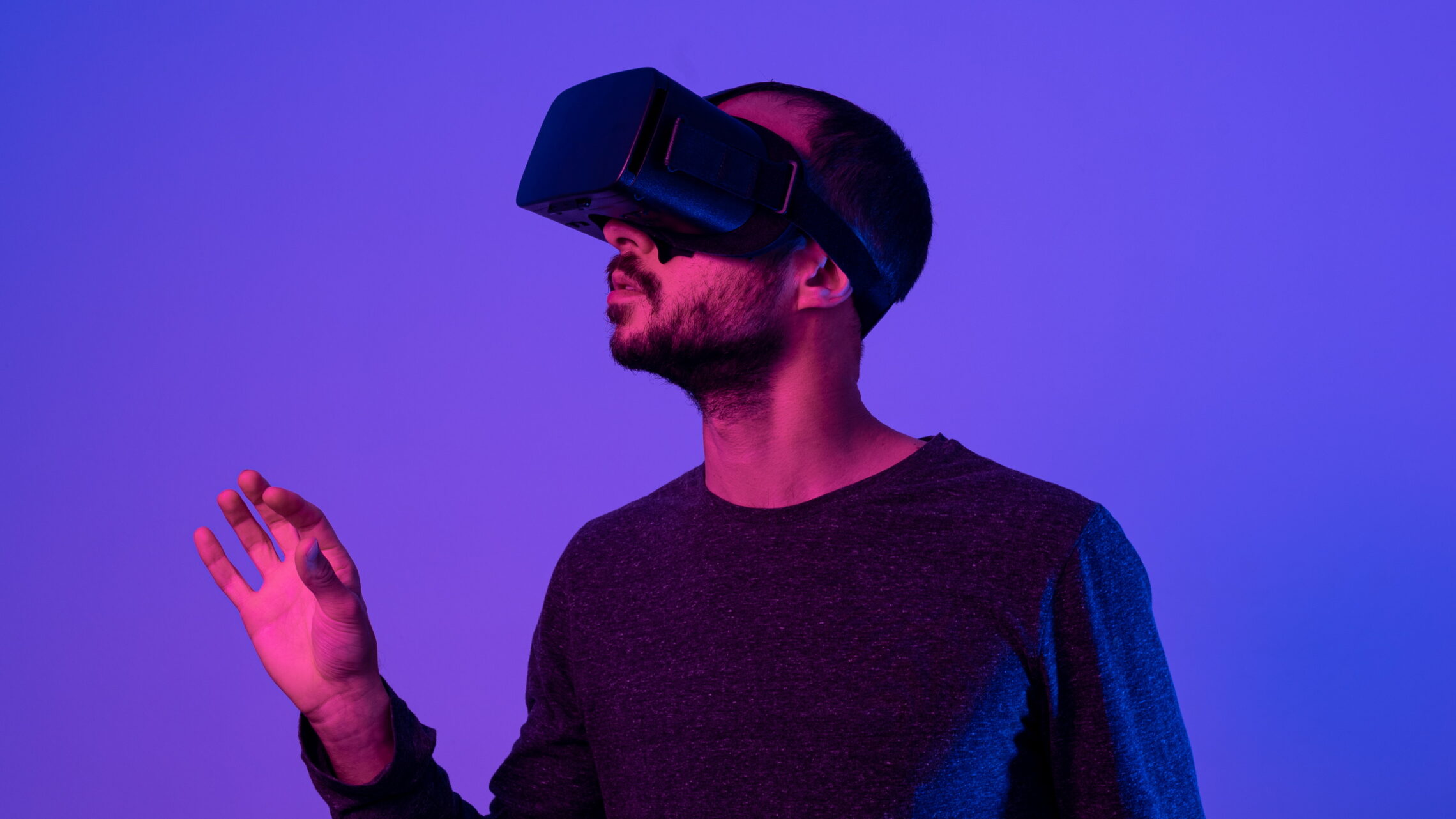This is an exciting moment to be in higher education, particularly if you care about learning and teaching.
Neither of us remembers a time when more people and publications are interested in issues of pedagogy and technology.
This moment coincides with our journey to transform our approach to education. Led by staff and students and guided by evidence and good practice, our destination is an educational experience that is exceptional and highly engaging.
We hope you will join us in this journey as collaborators. To that end, we focus here on the use of digital technologies to support learning, an area of practice we’ve been involved with for decades.
It is a process that has accelerated during the pandemic, and that pace has led to positive development and innovation and also to disappointment and confusion. We believe that much of the focus on modality is misguided. Instead, it is design that determines quality.
The springtime of 2020
We should probably begin with the understandably confusing language about educational practices during the pandemic, namely the overlapping use of terms like “online” and “blended” and “in-person”.
The abrupt shift in the spring of 2020 to emergency remote instruction should not be conflated with online education.
We made the shift. We did it extremely well, and as a consequence, millions of students were able to continue their education and graduate. This is a stunning achievement accomplished by students and staff across higher education. We are in awe of this achievement and are proud of our colleagues and students.
Having said this, students and staff who made this pivot to remote instruction didn’t choose to learn and teach in this way. It was forced upon them by circumstance.
This is perhaps an obvious but important point. Online education can be of exceptionally high quality, and so can on-campus education. Both can be lousy as well.
Each has to be designed and executed well to be of high quality (more on this below), and prior to the pandemic, students were ideally able to choose the approach that best fit their circumstances.
Choice and agency in how one learns is fundamental to student satisfaction and outcomes, and we forget this at our own peril.
Most of our students choose us, for example, because they want experiences in the city and on campus. When students are prevented from learning in ways that match their choices and expectations, we have a mismatch that will always result in disappointment. We’ve had quite a few mismatches because of the pandemic.
In contrast, our online students choose us because our approach best meets their needs and circumstances.
In both cases – students choosing to be in person here and students choosing to be online from anywhere in the world – we want to provide an appropriate set of opportunities, designed well, to meet student needs and expectations.
At present, we are moving from a moment in which students and staff have had experiences most didn’t choose into a moment in which we can now bring all that we have learned to bear in how we design our educational futures.
The importance of the digital
The use of digital technologies to support learning has been increasingly common over the past thirty years.
The extent to which learning is mediated by technology exists on a continuum, from very little to fully online programs. High quality learning experiences exist all along this continuum, and again, so do poor experiences. There is nothing magical about modality. Well designed, well executed teaching and learning is what drives quality.
We try to be clear about modality to be accurate, clear and ensure we help students find what they need. We reserve the term “online” to describe our fully online educational offering.
What we offer to students on campus with us is simply not “online,” but it is mediated and supported by digital technologies in all sorts of ways.
Students and their professors use our virtual learning environment in most modules, sometimes just to share information, and sometimes more fully as a platform for interaction, conversation and assessment.
Our students use digital technologies as fundamental tools for everything from doing science to making art. Indeed, some of the most transformative changes during the pandemic have been in design, where students moved from more analog to digital modes of production and sharing.
The outcomes were better with regard to the quality of work, and just as importantly, the move better prepared students for the workplace, where digital production is the norm, not the exception.
This is an important point. Employers have been clear with us that they need students with strong digital skills. This need accelerated during the pandemic.
In other domains, we have been and will continue to use digital technologies to facilitate engagement and feedback inside and outside the classroom.
Feedback on learning is one of the most transformative areas of application. For feedback to be effective, it must be provided quickly, be focused on the work we’ve asked students to do and provide them with enough time to reflect and make changes in their performance.
Learning technologies make feedback more likely to happen (because of efficiencies) and more useful to students because technologies provide a written or oral record for them to use as an aid to memory and a resource for reflection and revision.
Relatedly, one of the benefits students found in the increased use of content recordings during the pandemic is that they could slow down the video, watch again, and use assistive technologies when appropriate.
Finally, the effective use of learning technologies enable student-centered analytics.
We have now launched our own learning analytics effort focused on ensuring students have good information about their experience. We are also better able to identify which students need our care.
Exemplary projects can be found in many universities, including the University of Iowa’s Digital Learning Scorecard and the University of Michigan’s My Learning Analytics dashboard. The ability for teachers and students to view data about teaching and learning offers us new ways to improve and add value to the student experience.
It’s all about relationships
When it comes to questions of “quality,” no approach to education has been subject to more scrutiny than fully online education.
As Xu and Xu note in their recent review of the literature on distance learning, the best case for the quality of online learning can be found in the US Department of Education’s 2009 meta-analysis that found that students in online learning conditions perform better than those in face-to-face conditions.
Their own review, to the contrary, finds negative effects on student course performance and related learning outcomes (e.g., the need to repeat a course/module).
This contradiction in the research literature is less interesting to us than the reasons why students are successful or not, regardless of modality. That is, the research literature does not allow us to answer questions like “is online education good” or “is in-person education good”, but it can point us to characteristics that are more likely to lead to successful outcomes.
The issues that lead to success in online education are the same that lead to success in any learning modality. More importantly, the literature is clear that well designed educational experiences are much more effective than poorly designed experiences.
This is also true regardless of modality. Our approach focuses on design – on the intentional work to create experiences to help students develop the knowledge, skills, and dispositions necessary for them to enter a career and live a meaningful life.
The characteristic that is most important to an effective learning experience is the nature and quality of the interpersonal interactions, again regardless of modality. Consistent and meaningful interaction with an instructor and between and among students has long been a defining feature of high-quality learning experiences.
What our students missed during the pandemic – what all of us missed during the pandemic – is consistent and meaningful engagement with other human beings. Relationships matter deeply to great student experiences and good learning outcomes.
Educators have known this for a very long time. We should let computers do what computers do well so that people can focus on high-value tasks and interactions.
That means that regardless of modality, our design work will focus first on facilitating meaningful relationships between people and focusing squarely on designing exceptional, highly engaging educational experiences.















Not sure we get to the core of the argument here. There’s some slightly obvious points that we should design things so that they work well, and that human relationships and digital skills are important.
The more interesting bits would benefit from further discussion.
First, why is the “nature and quality of the interpersonal interactions” that is the “most important” characteristic to an “effective learning experience”? I’m sure those interactions can be important, but do they sit at the pinnacle? How do we know that?
Then there are questions about how to design “meaningful relationships between people” into teaching — I would be interested what constitutes a relationship between student and educator that is “meaningful,” and why you think that didn’t happen during the pandemic.
It might also be worth reflecting on the difference between “interactions,” “engagement” and “relationships” — you seem to slip between them as though they are synonymous, but I’m not sure they are.
Whilst I’d absolutely agree that the relationships are critical to student learning and success the headline paragraph is misleading when it states “ the focus on modality is misguided”.
I would argue that a deeper understanding of modality is critical to the success of your ambitions of “ facilitating meaningful relationships between people”.
It is absolutely essential to understand modalities, as the approaches to designing these experiences varies depending on the mode through which the relationship is experienced. Failure to understand modalities will likely result in a failure of those relationships.
No matter how much hocus-pocus and fancy language is used about online teaching, there is only one thing that truly matters.
i.e. Does it involve a young adult being ‘taught’ alone in their bedroom staring at a screen , probably at irregular hours, when previously that teaching would have been face-to-face in a lecture hall / seminar room in accordance with a structured timetable in normal working hours.
If it does, them it is not a good thing for that persons development as a functioning human being.
Our young adults should be meeting people face-to-face. They should be going out into the real physical world. HE should not go down the online route and give them another reason to spend even more time isolated interacting only via their various screens.
@Paul, I think your claim is a bit too broad. Yes, learning in physical proximity to other people learning the same thing is generally good (if the course is well-designed, which is the point of the article), but there are so many exceptions where people need to be alone in their bedroom, staring at a screen at irregular hours. For instance, a single parent who works during ‘regular hours’ (what are those anyways?) and can’t afford childcare to attend classes. Or the person with physical disabilities that prevent them from attending class. Or the person who struggles with anxiety, depression, PTSD, or any number of psychological barriers. Or the person who lives in a remote community with no access to physical learning spaces outside their home. The list goes on and on… If there is one thing that truly matters, it certainly isn’t the modality. The fact of the matter is that there are many things that truly matter and those things are different for everybody.
The problem for me is that the moment that remote, lonely learning via a screen becomes the answer to the “single parent/regular hours”, “physical disabilities”, “anxiety/depression” problems is the moment we give up on on campus learning becoming more accessible. Guess who loses out when we say to the student with mobility issues “don’t worry, you can watch everyone else take part via a video link”?
What Simone and Jeff fail to mention is how this forced and rapid transition towards ‘online education’ has caused immense stress and strain in both staff and students. With universities offering zero time for adjustment, most academics across the U.K. higher education system have been strong-armed into the online delivery of in-person material. It is not surprising that as we have witnessed the demands on staff and students increase, we have seen a deep decline in staff-student relationships. The large drop in student satisfaction and the overall poor recent NSS results personify student’s growing discontent with the shape and direction of U.K. higher education. Online education can work, but time for appropriate adjustment is required and it seems that this time is something that U.K. universities are not willing to kneel to as they aggressively pursue their online cost minimisation agenda.
There’s a fair number here happy to blame all the woes of the sector on blended learning. I’d be interested to hear thoughts on low student attendance at in-person lectures this last academic year.
I believe you answered your own question – blended learning. As a student, I really see little justification for the pursuit of online education apart from universities attempting to cut costs and save on in-person delivery. This whole spin of pedagogical progress would make Malcom Tucker proud. Most students are fed up with the constant changes forced upon them by universities and ultimately we want what we paid for – High quality on campus teaching not GCSE production quality YouTube videos.